Last Updated on March 21, 2025 by Michelle
I had no desire to grind my own flour a decade ago.
But when our family moved out of suburbia and into our old New England farmhouse, I never would have thought that one old house could teach me so much either.
It turns out our old farmhouse was at one time the miller’s home. He harnessed the power of the river running through his acres to grind wheat, corn, and other grains.
I’m not gonna lie… some days I find it so stinking cool that I’m standing in the miller’s home, in my modern kitchen–armed with an automatic dishwasher, a snazzy mixer, and a (drumroll please) high-tech, yet old-fashioned, grain mill.
And here I am, milling grain just like the original family did who built our house, hundreds of years ago. Okay, obviously there are some differences–like how I easily plug my mill into an outlet and let it work its magic without having to feed and harness any donkeys–but ya’ know…

What I learned when we moved into our old farmhouse
So not only have I learned how to expertly vacuum out the deep grooves in-between our super old wide pine floorboards, strategically hang heavy duty blankets in windows and doors to slow cold drafts, and even 3 Secrets Old Farmhouse Owners Might Never Tell You, but more importantly, I’ve learned a little about living closer to the way we should.
Eating the way we should.
Like families did back when food was real.
Why You Should Grind Your Own Flour
Whenever I show my mill over on instagram, or talk about milling fresh flour, I get tons of questions about the process. So let’s talk about some of the questions I get asked the most.
If you’d like to peruse my instagram highlights about fresh flour, there’s a lot of insights there as well:
Fresh Flour Highlight on instagram
Grain Mill Highlight on instagram
Alternative Flours Highlight on instagram
Let me know in the comments if I don’t answer your particular questions. Nothing gets me more excited than chatting about fresh milled flour. Does that make me a nerd? Maybe. A fresh flour nerd. I’m not mad about it.
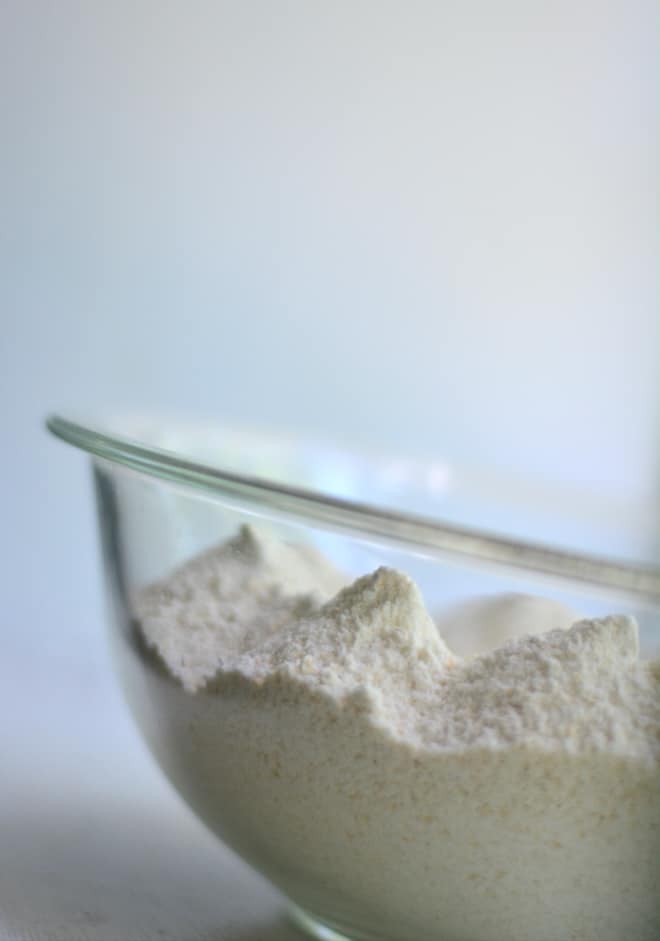
Does grinding your own flour save money?
Yes and no. This largely depends on where you’re able to source your wheat berries from and how much bulk food you’re able to store.
Keep in mind that, while technically 1 pound of wheat berries will produce 1 pound of flour, 1 cup of wheat berries will produce much more than 1 cup of flour once it’s milled.
If you’re able to find a great local source, grinding your own flour actually can be a lot cheaper than purchasing higher-quality flours at the store.
If you’re purchasing wheat berries for 88 cents/pound, you’re only spending $4.40/ 5 pounds of flour that you’re making.
Organic, all-purpose King Arthur flour? $10.95 (that’s the price currently listed on their website)!
Five pounds of their stone ground, whole wheat flour is listed for $6.95. So you’re saving $2.55-$6.55 per every 5 pounds of flour you’re grinding yourself.
That’s a lot of potential savings!
Is milling your own flour healthier?
Milling your own flour is astronomically healthier than pre-milled store flour.
First of all, you know exactly what’s IN your flour… Did you know when you purchase packaged bread at the store, made with refined flour, of course, you might be eating duck feathers, hog hair, and human hair?
I’m serious. It’s officially called L-cysteine. Go ahead, google “L-cysteine in bread,” it’s insane.
Listen in to episode 157 of the Simple Doesn’t Mean Easy podcast, with Gary Leavitt, President of Nutrimill, for more on that. Or watch the episode here:
But even overlooking the whole “duck feather fiasco,” the two options for flour–store-bought vs. fresh–are so different that I now call fresh-milled flour “alive” and store-bought flour “dead.”
And it’s really true. Fresh-milled flour will contain all 3 parts of the wheat berry–the bran, germ, and endosperm, all of which play important rolls in your body’s ability to digest the wheat, absorb the nutrients in the wheat, and even helps your body feel fuller for longer.
Modern flour as we know it is stripped down to just 1 of the 3 parts of wheat, leaving the only part that is shelf-stable: the endosperm, which is basically just starch. Starch is hard for our bodies to digest and process on its own.
The bran and germ–the parts that aren’t in refined flour–are both full of fiber, will actually slow down the process of your body turning the starch of the endosperm into glucose. This means when you’re eating food made with fresh flour you will maintain a steady blood sugar level, rather than having sharp blood sugar spikes (source).
Shockingly, 100 grams of refined white flour only has roughly 2-3 grams of fiber left, which is staggering compared to the 10-12 grams of fiber found in the same 10o grams of whole wheat flour.
Also, don’t ever be fooled into thinking that “enriched” flour is somehow good for you. The mere fact that they have to “enrich” it implies a loss of nutrients. So never equate “enrichment” with wholesomeness. According to this study of the nutritional characteristics of fresh-ground vs. conventional breads, when we look for 20 nutrients that we find in fresh flour, there is an average loss of 70-80% of those nutrients in refined and enriched flour.
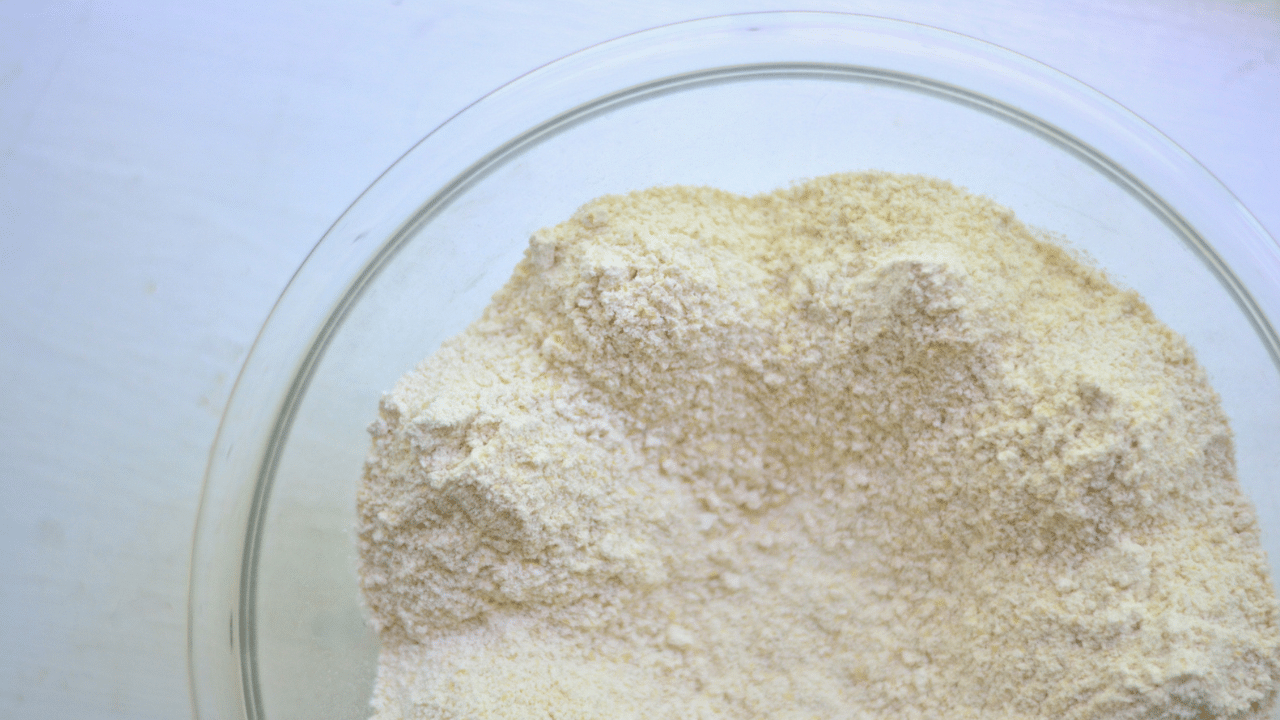
Is refined flour bad for our health?
The more I’ve learned to appreciate real food, and try to cut out processed food from my kitchen in little steps, over the course of many years, I’ve come to decide that there’s not much redeeming at all about processed food, well unless you’re talking about all the money to be made by the huge corporations behind it. But they don’t have our best interest, or our overall health, at heart. The bottom line is money.
The very fact that manufacturers have to add nutrients back INTO the refined flour and then they plop the nice-sounding label of “enriched” on it has me very skeptical that refined flour has any redeeming nutritional value whatsoever. But then one day I came across a description of this study and it sealed my determination to do what I could to use fresh flour instead of refined whenever possible.
Before I describe this, I do have to say from all I’ve been able to find it was not a scientifically documented study, in fact I can’t find any official documentation of it (if you know of any, please reach out!). But it’s intriguing enough that I want to share this with you, even though I can’t give you a detailed source link.
This study, done back in 1970 of the effects on rats of eating refined flour, is mind blowing. And yes, it was seriously THAT long ago and yet no one has heard of this, am I right?
To investigate the nutritional value of fresh stone-ground grains for bread-making, researchers in Germany did this study on rats (Bernasek, 1970).
Rats were fed diets consisting of 50% flour or bread.
- Group 1 consumed fresh stone-ground flour.
- Group 2 was fed bread made with fresh stone-ground flour.
- Group 3 consumed the same flour as group 1 but after 15 days of storage.
- Group 4 was fed bread made with the flour fed to group 3.
- Group 5 consumed white flour.
After four generations, only two groups of rats were still fertile–the first two; the two groups fed fresh ground flour or bread made from fresh ground flour.
The rats in groups 3 to 5 had become infertile.
How does this equate in human years and generations? Four generations for rats is believed to be equivalent to one hundred years in humans. (source)
Now that I’ve dropped that insane thought on you, I’m sure you have lots more questions about grinding your own flour, yes? So let’s continue…
How much fresh flour will 5 pounds of wheat berries make?
The pounds of wheat berries you grind should translate to the same poundage of flour. Although grinding the wheat aerates it and creates much more volume, 5 pounds of wheat berries should make 5 pounds of flour.
In terms of measurement, I’ve found that grinding about half the amount of wheat berries compared to the amount of flour I need does the trick. So if a recipe calls for 2 cups of flour, I’ll need to grind about 1 cup of wheat berries.
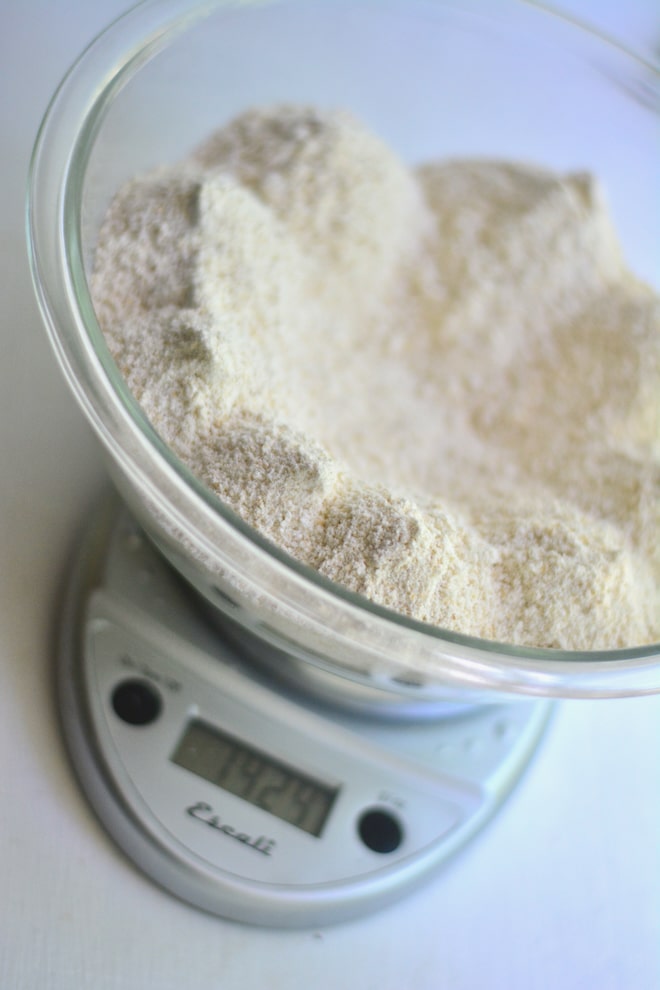
How long can I keep wheat berries?
Wheat berries will store indefinitely, safely inside their hard outer coating. But once it’s ground, fresh flour will only last up to 30 days, and even then you will notice that it loses a good bit of it’s amazing flavor as it ages. (More about that below.)
How do I store wheat berries?
I keep my immediate stash of every kind of wheat berry I love using in 1/2 gallon mason jars in my kitchen pantry. I use these lids because they’re heavy gauge stainless steel and (most importantly) they have an amazing seal.
I keep my bulk stash of each kind of wheat berry in food-grade buckets, topped with these easy-to-open smart lids, so I can quickly snag more whenever I need it.
I store my bulk-food buckets down in my root cellar. I use different colored lids for each kind of berry (not to mention all the other bulk foods I store this way, from rice to popcorn to dried fruit and more), so it’s super easy to know what bucket I need to head towards when replenishing my kitchen pantry stash.
What kind of wheat berries do I need?
This is a deep question and the there are so many wonderful types of wheat berries. So, for now, I’ll leave it at this:
Hard wheats are for anything that will need to develop gluten (think rolls and pizza crust).
Soft wheats are for things that you don’t want to develop gluten because it would make them chewy or gummy (think baked goods, like cookies, cakes, pancakes, and waffles).
This is a great hard white wheat berry for breads, rolls, etc.
This is a great soft wheat berry for cookies, cakes, etc., including the apple muffins I just made tonight…
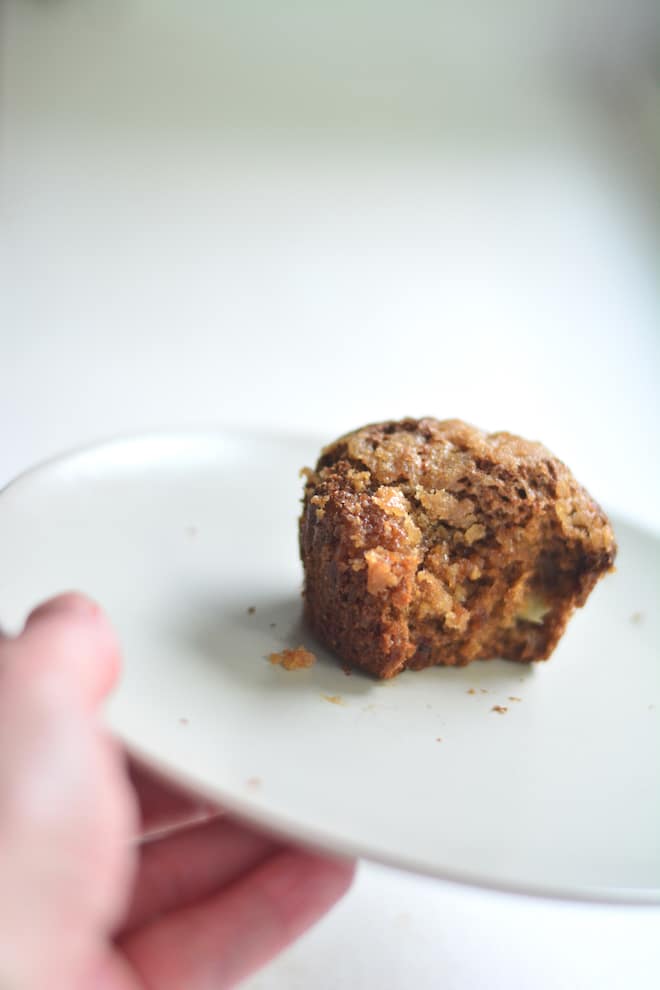
Does wheat loose nutrients when you’re grinding your own flour?
Like I said before, flour purchased from the store and flour ground at home are essentially different products entirely. One reason why is wheat loses nutrients as soon as it’s exposed to air and light. The process of grinding flour removes the protective coating of the wheat kernel and allows the flour to start deteriorating immediately.
The B vitamins found in wheat are quickly destroyed by contact with light and air. Similarly, the fatty acids found in fresh flour begin to diminish as the flour ages.
This is why many store-bought “whole wheat” flours tend to taste bitter, because the fatty acids are breaking down and actually starting to go rancid.
The sooner you can use fresh flour, the more of the benefits you’ll cash in on.
How long does fresh flour last after milling?
Flour loses nutrients as soon as it’s ground. So the sooner you can use the flour after you grind it, the better it is for you. In fact, some people think that flour looses as much as 40% of its nutritional value within the first 24 hours of being ground, and up to 90% after 2-3 days. Exposing the ground wheat berry to oxygen diminishes the level of vitamins found in the flour.
How do I store freshly milled flour?
If you’re planning on milling flour to store, your best bet will be to keep it in the fridge or freezer. Ideally, using fresh flour right after you grind the flour is best.
Is milling your own flour worth it?
Milling my own flour has been one of the most worthwhile healthy food journeys I’ve been on.
It has radically transformed my taste buds, helped me stay fuller for longer in between meals, and lets me feel good about the bread my family and I are eating.
My goal is to help families turn wheat back into a healthy, whole food staple. And milling your own flour is more attainable and realistic than ever.
What do you have to loose?
Want to know even more about why you should grind your own flour?
Go here to dive into my free e-course all about fresh flour. You’ll be glad you did.
How do you choose a flour mill?
I break down all the things to consider when choosing what grain mill is best for your family right here: The Ultimate Guide to Choosing a Grain Mill
I talk about my grain mill, as well as the 11 other kitchen tools I seriously would hate to be without, in this episode of my podcast… Click below or listen on Apple Podcasts here.
More Details About Why You Should Grind Your Own Flour:
Why I Started Milling My Own Flour
Chocolate Chip Cookies made with fresh flour
Making Pizza with Fresh Milled Flour
Comparing grain mills & what to look for (video)
Dive into my totally FREE e-course all about fresh flour
“He satisfies the thirsty and fills the hungry with good things.” Psalm 107:9
Pin this for later!
Click on the image below to pin this post.
Find out why SoulyRested was considered to be one of the One of the Top Homesteading Blogs.
Glance at my Resource Page if you’d like to get a glimpse of all the supplies I use and recommend for everything from gardening, to homeschooling, to chicken care, to nature journaling, to maple syrup making.
I’d love to connect!
To find me in some other neck of the woods, just click any (or every!) icon below:




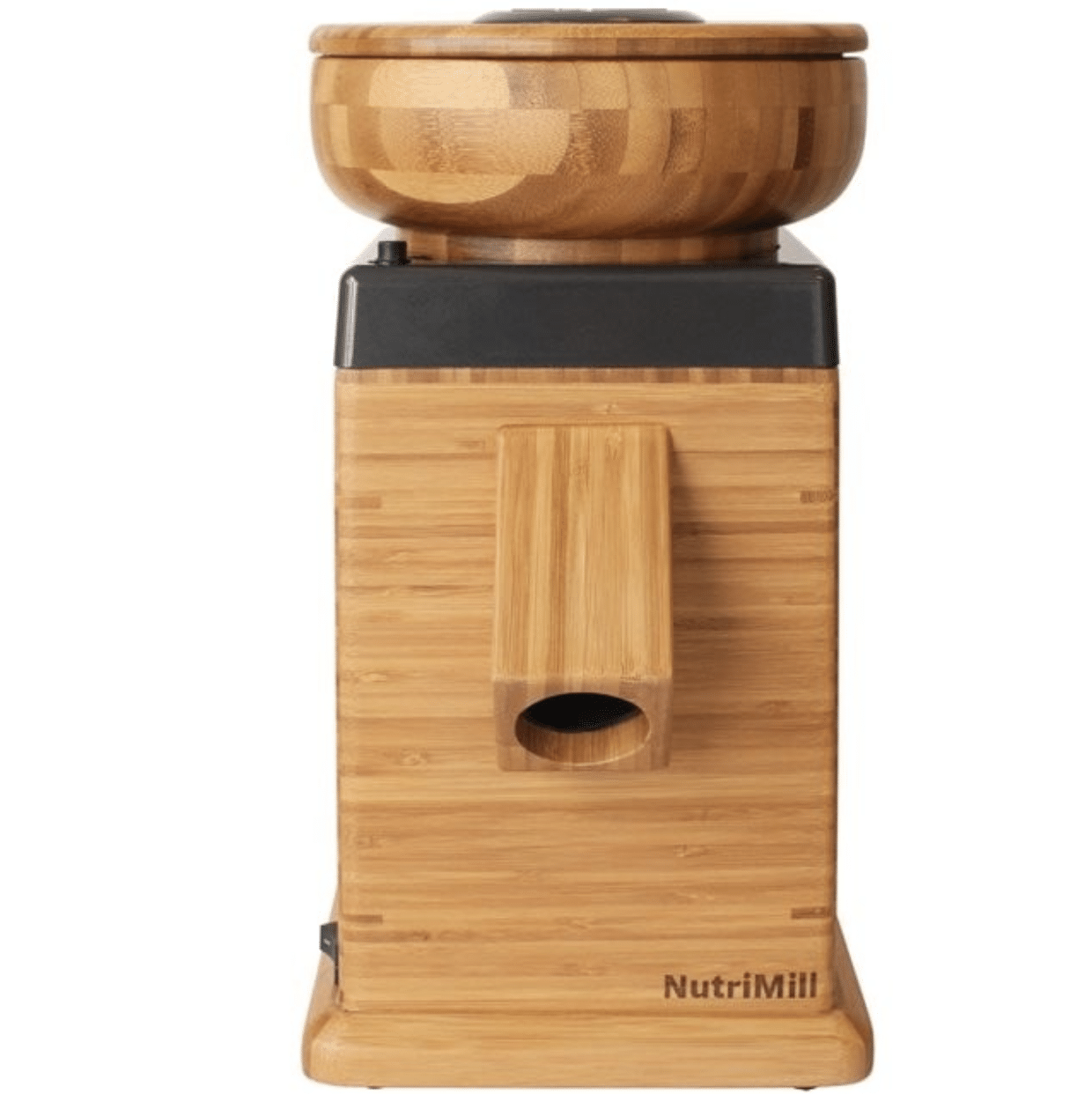

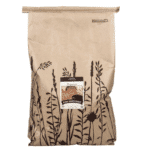
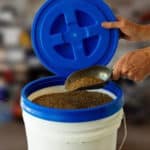
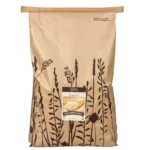
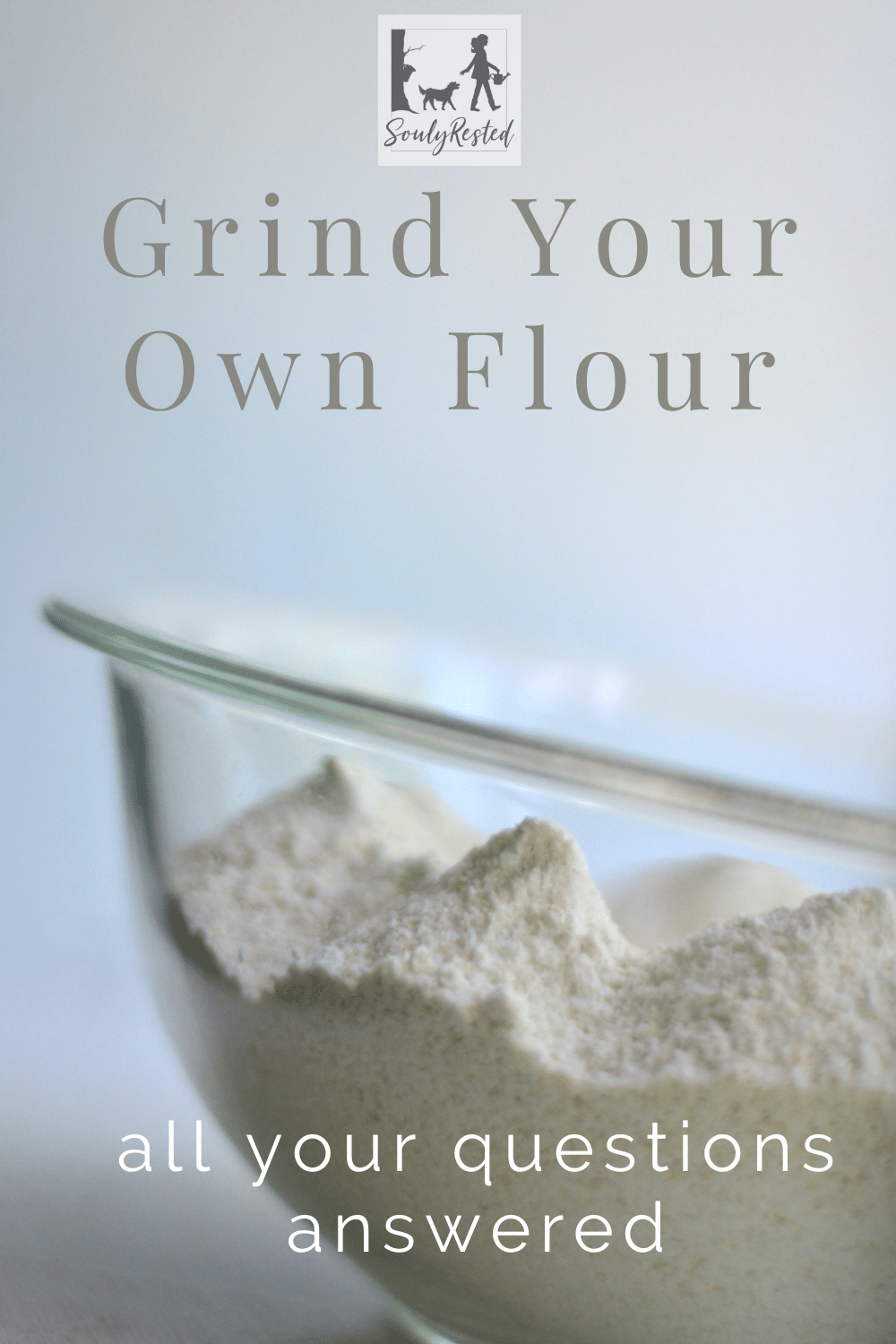





I have been milling and baking with whole wheat fir 6+ years, there is no going back!
It is amazing isn’t it?? The flavor is unparalleled.
Michelle,
I’m using our Vitamix dry blender to make our whole wheat flour. How can I make white flour?
Thank you,
Kitty
Hi Kitty, fresh ground flour has such an amazing flavor profile and includes all 3 vital parts of the wheat berry (unlike enriched flour which has been stripped of everything and then “enriched” by adding some things), so it will honestly never be just like store-bought white flour. But the flavor is so much better! There are a few things you can do to wind up with an end product more like what your family is used to… You can use part refined flour & part fresh ground. You can sift out some of the bran in your fresh flour. And you can add a 1/4 cup of vital wheat gluten to every loaf you make (since fresh flour doesn’t have all the gluten that refined flour does). Hope that helps!
Would it help to grind your own flour if you are a diabetic. I completely quit eating flour based products because when you eat the flour products made from white flour it turns to sugar immediately in your body.Thank you for your information so far . It’s very informative. Melody
I’m not a medical expert or anything, but in my personal opinion, fresh milled flour is so much better for your body, easier to digest, and offers your body so much fiber that it’s basically a completely different product from refined white flour. Actually eating all three parts of the wheat berry (not just the starchy endosperm like in white flour) helps your body digest and absorb the flour, rather than just processing it as pure sugar like with refined white flour (without the bran and germ).